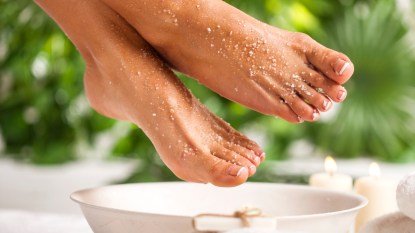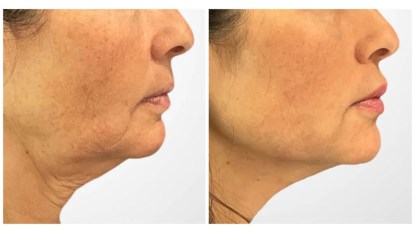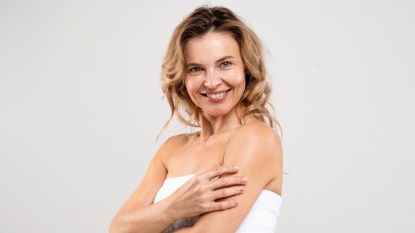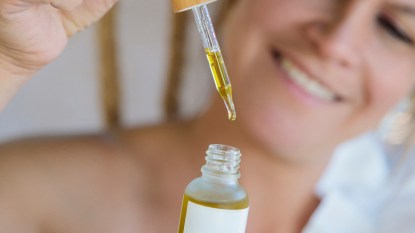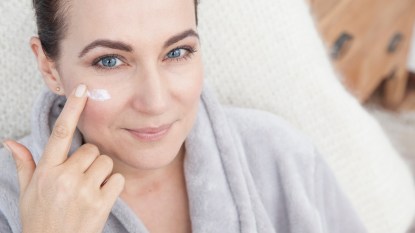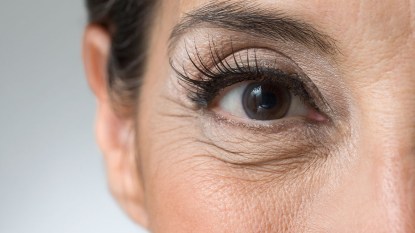How to Get Rid of Those Pesky Bumps on the Back of Your Arms
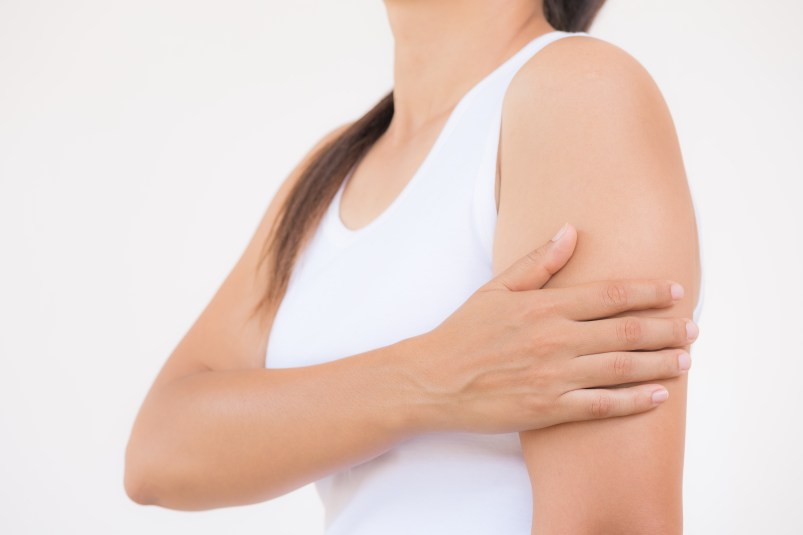
You’ve had those bumps on the back of your arms for years and after a little investigating you’ve discovered that they have a name — keratosis pilaris. But what exactly is keratosis pilaris (KP), should you be worried about it, and how do you treat it? Let’s break it down.
What is keratosis pilaris?
According to esthetician Heather Wilson, “Keratosis pilaris is a condition in which the skin produces too much keratin, blocking hair follicles and resulting in dry, bumpy skin.” It’s also often referred to as “chicken skin” due to the fact that it has a similar appearance to the skin of a plucked chicken. KP is common, harmless, and often mistaken for pimples. While you’ll primarily found it on the backs of your arms, KP can also appear on the thighs, face, or buttocks.
How to Treat Keratosis Pilaris
It’s important to be gentle when treating affected areas, according to Wilson. “While the condition is harmless, it can be annoying, which often results in people going to great lengths to eliminate the bumps, often over-treating the skin in the process. To best address the condition, it is recommended to keep it simple. Use a gentle body scrub two to three times a week in the shower, and take caution to not over scrub the skin — although it will be tempting. Over scrubbing can cause dryness, irritation, and also risks the skin continuing to produce keratin too quickly, which will only result in more rough, bumpy skin.”
What ingredients should you look for in a keratosis pilaris oil, lotion, or cream?
Being mindful of the ingredients in KP creams, scrubs, and serums is the first step to success when it comes to finding for products to treat keratosis pilaris. “Be sure to look for a clean body scrub that is free of sulfates, fragrance, synthetic waxes, or silicones as these ingredients can strip the skin or cause clogged pores,” suggests Wilson.
So, what does she recommend you use on your skin? Oil! “Keeping the skin moisturized is key in reducing and preventing KP symptoms. My best recommendation is to apply a pure body oil, such as organic argan oil or fractionated coconut oil, directly to wet skin after every shower. By using a pure oil you are ensuring that the product you’re applying is nourishing the skin and you’re eliminating exposure to fillers, synthetic waxes, silicones or artificial fragrances that might otherwise irritate the skin.”
Alongside body oils, it’s important to look for hydrating products containing alpha hydroxy acid, lactic acid, salicylic acid, or urea, as these ingredients are known for their ability to loosen and remove dead skin, which helps clear out congested pores. By dedicating some time to properly care for your keratosis pilaris, and your skin in general, you’ll find your symptoms subsiding in no time.


